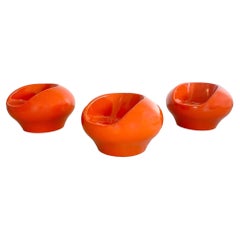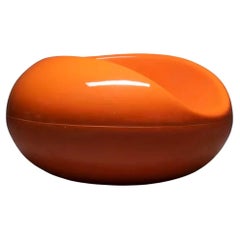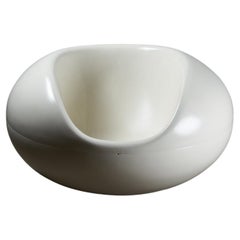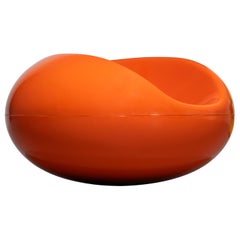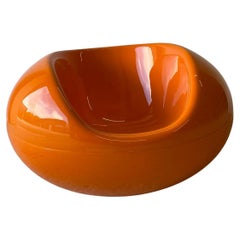Eero Aarnio Pastil Chair
Vintage 1970s Finnish Chairs
Fiberglass
2010s Finnish Modern Lounge Chairs
Fiberglass
2010s Finnish Modern Lounge Chairs
Fiberglass
2010s Finnish Modern Lounge Chairs
Fiberglass
2010s Finnish Modern Lounge Chairs
Fiberglass
2010s Finnish Modern Lounge Chairs
Fiberglass
2010s Finnish Modern Lounge Chairs
Fiberglass
2010s Finnish Modern Lounge Chairs
Fiberglass
Mid-20th Century Finnish Space Age Lounge Chairs
Fiberglass
Late 20th Century Finnish Space Age Lounge Chairs
Polyester
Vintage 1960s Finnish Space Age Lounge Chairs
Fiberglass
Vintage 1960s Finnish Modern Chairs
Fiberglass, Polystyrene
Vintage 1960s Finnish Mid-Century Modern Armchairs
Fiberglass
Recent Sales
Vintage 1960s Space Age Lounge Chairs
Plastic
Vintage 1960s Finnish Chairs
Fiberglass
Mid-20th Century Finnish Mid-Century Modern Lounge Chairs
Polyester
Vintage 1970s Finnish Lounge Chairs
Plastic
Vintage 1960s Finnish Mid-Century Modern Lounge Chairs
Fiberglass
Vintage 1970s Finnish Space Age Lounge Chairs
Fiberglass
Mid-20th Century Finnish Mid-Century Modern Rocking Chairs
Polystyrene
Vintage 1960s Italian Club Chairs
Plastic
Vintage 1970s Finnish Space Age Lounge Chairs
Fiberglass
Vintage 1960s Finnish Chairs
Fiberglass
Vintage 1960s Finnish Mid-Century Modern Lounge Chairs
Fiberglass
Vintage 1960s Finnish Scandinavian Modern Rocking Chairs
Fiberglass
Vintage 1960s Finnish Chairs
Fiberglass
Vintage 1960s Finnish Lounge Chairs
Vintage 1960s Finnish Lounge Chairs
Fiberglass
Vintage 1960s Finnish Modern Chairs
Fiberglass, Polyester
People Also Browsed
20th Century French Desks
Metal
21st Century and Contemporary Swedish Mid-Century Modern Table Lamps
Textile
2010s Dutch Modern Side Tables
Resin
Vintage 1960s Dutch Mid-Century Modern Daybeds
Teak, Upholstery
2010s American Modern Wall Lights and Sconces
Brass
2010s Italian Modern Chaise Longues
Wood
Vintage 1970s American Modern Lounge Chairs
Fabric, Fiberglass
21st Century and Contemporary Mexican Mid-Century Modern Floor Lamps
Textile, Wood, Linen, Fiberglass
Mid-20th Century Italian Mid-Century Modern Chairs
Steel, Chrome
Early 2000s American Post-Modern Sectional Sofas
Chrome
Vintage 1960s French Mid-Century Modern Beds and Bed Frames
Fiberglass
2010s American Other Benches
Rope, Lambskin, Mohair, Acrylic, Lucite
21st Century and Contemporary Italian Mid-Century Modern Wall Lights and...
Metal, Aluminum, Brass
2010s Finnish Modern Lounge Chairs
Fiberglass, Leather
2010s Italian Modern Wardrobes and Armoires
Chrome
2010s Italian Modern Chandeliers and Pendants
Metal, Brass
Eero Aarnio Pastil Chair For Sale on 1stDibs
How Much is a Eero Aarnio Pastil Chair?
Eero Aarnio for sale on 1stDibs
“I always look ahead, never back,” Finnish design legend Eero Aarnio has been quoted as saying. A leading innovator of modern furniture design, Aarnio has long embraced a bold, playful, confident and colorful style several steps ahead of his time.
For his 1954 entrance test for the Institute of Industrial Arts in Helsinki, Aarnio created a whimsical painting of a man reading a newspaper in a red, curved chair whose silhouette foreshadowed Aarnio’s Ball chair of 1963. That spherical seat skyrocketed him to design fame, and decades later, it is still recognized as one of the world’s most futuristic designs.
Born in 1932 to a house painter and a seamstress, Aarnio has always had a cheerful disposition and an independent spirit. He went his own way early on: After just two years at Asko, the big Scandinavian furniture company that originally produced his Ball chair, Aarnio established his own studio in 1962.
Over the next decade, the young visionary made an indelible mark on the world. Open-minded and entrepreneurial, Aarnio embraced the aesthetics, materials and technologies of the Swinging Sixties, working with a new generation of plastics and molding them into fluid, organically shaped, brightly hued forms.
Introduced at the 1966 Cologne Furniture Fair, the pod-like fiberglass Ball chair soon adorned the homes of movie stars and royalty, graced magazine covers around the world and was featured in films and ads. The groundbreaking seat originally came in orange, white, black, yellow and red and could be ordered with a telephone installed in it. Yet this designer of the future, as he was known in the 1960s, has always insisted that he didn’t deliberately seek to be associated with the decade’s sci-fi aesthetic.
“I had no intention to create either pop or Space Age design — as many people label my work,” Aarnio declares in one of the essays included in Eero Aarnio — Designer of Colour and Joy, a book jointly created by the Design Museum and publisher WSOY to accompany 2016’s “Eero Aarnio” exhibition.
The show featured a number of Aarnio’s objects, including his iconic Ball, Pastil (1967), Bubble (1968), Tomato (1971) and Pony (1973) chairs. These were joined by lesser-known seating and other objects like the rattan Juttujakkara, or mushroom, stool (1960); the sculptural Double Bubble lamp (2000), with which Aarnio first explored the possibilities of rotation-cast plastic; and the three-legged Rocket (1995) and Baby Rocket (2006) stools, both parts of a collection produced by Artek after Tom Dixon, the company’s creative director from 2004 to 2009, discovered the original piece in Aarnio’s kitchen.
“Aarnio expanded the whole idea of what constitutes furniture,” explained Suvi Saloniemi, the Design Museum’s chief curator. “His significance as a designer is crystallized in the liberation of form that he has introduced by discovering the properties of plastic as the material of a designer. His furniture is sculpture-like and eye-catching, but the pieces are always utilitarian at the same time.”
Find an extraordinary range of vintage Eero Aarnio chairs, tables and other furniture on 1stDibs.
Materials: Plastic Furniture
Arguably the world’s most ubiquitous man-made material, plastic has impacted nearly every industry. In contemporary spaces, new and vintage plastic furniture is quite popular and its use pairs well with a range of design styles.
From the Italian lighting artisans at Fontana Arte to venturesome Scandinavian modernists such as Verner Panton, who created groundbreaking interiors as much as he did seating — see his revolutionary Panton chair — to contemporary multidisciplinary artists like Faye Toogood, furniture designers have been pushing the boundaries of plastic forever.
When The Graduate's Mr. McGuire proclaimed, “There’s a great future in plastics,” it was more than a laugh line. The iconic quote is an allusion both to society’s reliance on and its love affair with plastic. Before the material became an integral part of our lives — used in everything from clothing to storage to beauty and beyond — people relied on earthly elements for manufacturing, a process as time-consuming as it was costly.
Soon after American inventor John Wesley Hyatt created celluloid, which could mimic luxury products like tortoiseshell and ivory, production hit fever pitch, and the floodgates opened for others to explore plastic’s full potential. The material altered the history of design — mid-century modern legends Charles and Ray Eames, Joe Colombo and Eero Saarinen regularly experimented with plastics in the development of tables and chairs, and today plastic furnishings and decorative objects are seen as often indoors as they are outside.
Find vintage plastic lounge chairs, outdoor furniture, lighting and more on 1stDibs.
Finding the Right Seating for You
With entire areas of our homes reserved for “sitting rooms,” the value of quality antique and vintage seating cannot be overstated.
Fortunately, the design of side chairs, armchairs and other lounge furniture — since what were, quite literally, the early perches of our ancestors — has evolved considerably.
Among the earliest standard seating furniture were stools. Egyptian stools, for example, designed for one person with no seat back, were x-shaped and typically folded to be tucked away. These rudimentary chairs informed the design of Greek and Roman stools, all of which were a long way from Sori Yanagi's Butterfly stool or Alvar Aalto's Stool 60. In the 18th century and earlier, seats with backs and armrests were largely reserved for high nobility.
The seating of today is more inclusive but the style and placement of chairs can still make a statement. Antique desk chairs and armchairs designed in the style of Louis XV, which eventually included painted furniture and were often made of rare woods, feature prominently curved legs as well as Chinese themes and varied ornaments. Much like the thrones of fairy tales and the regency, elegant lounges crafted in the Louis XV style convey wealth and prestige. In the kitchen, the dining chair placed at the head of the table is typically reserved for the head of the household or a revered guest.
Of course, with luxurious vintage or antique furnishings, every chair can seem like the best seat in the house. Whether your preference is stretching out on a plush sofa, such as the Serpentine, designed by Vladimir Kagan, or cozying up in a vintage wingback chair, there is likely to be a comfy classic or contemporary gem for you on 1stDibs.
With respect to the latest obsessions in design, cane seating has been cropping up everywhere, from sleek armchairs to lounge chairs, while bouclé fabric, a staple of modern furniture design, can be seen in mid-century modern, Scandinavian modern and Hollywood Regency furniture styles.
Admirers of the sophisticated craftsmanship and dark woods frequently associated with mid-century modern seating can find timeless furnishings in our expansive collection of lounge chairs, dining chairs and other items — whether they’re vintage editions or alluring official reproductions of iconic designs from the likes of Hans Wegner or from Charles and Ray Eames. Shop our inventory of Egg chairs, designed in 1958 by Arne Jacobsen, the Florence Knoll lounge chair and more.
No matter your style, the collection of unique chairs, sofas and other seating on 1stDibs is surely worthy of a standing ovation.
Read More
The 21 Most Popular Mid-Century Modern Chairs
You know the designs, now get the stories about how they came to be.
The Ball Chair, Eero Aarnio’s Space Age Masterpiece, Was Almost Never Made
Now considered emblematic of 1960s mod aesthetics, the Finnish designer's famous creation was far from an overnight success.
